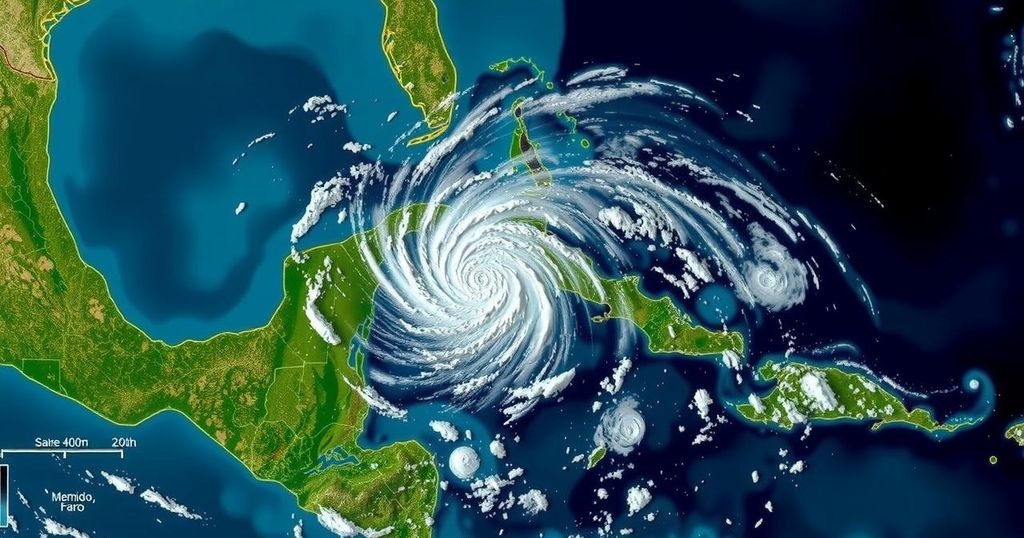Hurricane Rafael Strengthens to Cat 3: Key Updates and Season Overview

Hurricane Rafael has strengthened to Category 3 with sustained winds of 120 mph. It is expected to weaken as it moves westward in the Gulf of Mexico, sparing Florida from significant impacts but likely causing hazardous surf conditions. The hurricane season runs until November 30, with the next named storm being Sara.
The National Hurricane Center has reported that Hurricane Rafael has intensified into a Category 3 storm, with sustained winds reaching 120 mph. The storm, however, is projected to move away from Florida and the United States and will likely weaken over the coming days as it traverses the Gulf of Mexico. Significant impacts have already occurred in western Cuba, where Rafael caused widespread power outages. Meanwhile, a trough of low pressure near Puerto Rico is generating heavy rainfall but poses a low chance for further development. As Rafael continues on its west-southwest trajectory, it is expected to encounter increased wind shear, leading to a gradual reduction in wind intensity. Coastal areas along the Gulf could face hazardous surf and rip currents due to Rafael’s swells. Hurricane Rafael currently sits at coordinates 24.5N 88.0W, positioning itself approximately 245 miles north-northeast of Progreso, Mexico, and 585 miles from the mouth of the Rio Grande. Forecasts indicate that the hurricane is moving westward at nine mph, with a minimum central pressure recorded at 956 MB. Residents and interests in the southern Gulf of Mexico are advised to remain vigilant and monitor updates on Rafael’s progress. Additionally, the National Hurricane Center is tracking other weather systems, including a low-pressure area near Puerto Rico that is producing disorganized showers and thunderstorms but is deemed unlikely to develop further. These weather conditions are expected to affect areas such as the northern Leeward Islands and Puerto Rico, which may experience localized heavy rainfall. The Atlantic hurricane season is officially recognized from June 1 to November 30, encompassing the northern Atlantic Ocean, Caribbean Sea, and the Gulf of Mexico. The next named storm anticipated this season will be named Sara. It is imperative for residents in affected regions to remain informed and prepared as the hurricane season continues.
Hurricane Rafael has been under scrutiny as it strengthens within the Gulf of Mexico. With the Atlantic hurricane season being a critical time for tropical storms to develop, the National Hurricane Center provides updates on such systems to inform the public. The dynamics of hurricanes involve various meteorological factors, such as wind shear and troughs of low pressure, which can significantly affect the storm’s trajectory and intensity. Understanding these factors is necessary for assessing potential impacts on regions like Florida, which is frequently at risk during this season. Furthermore, the Atlantic hurricane season, which extends from June to November, is a time when numerous storms can develop, necessitating constant monitoring and preparedness by coastal communities. The effects of previous storms, such as those experienced in Cuba, highlight the importance of situational awareness during this season.
In conclusion, while Hurricane Rafael has intensified and poses certain risks to Gulf coastal areas, its projected path suggests a movement away from the United States, leading to expectations of weakening. Vigilance is warranted due to dangerous surf conditions along the coast, underscoring the need for residents to stay informed about ongoing weather developments during the hurricane season. As conditions evolve, continued monitoring remains essential for ensuring safety and preparedness.
Original Source: www.timesreporter.com






